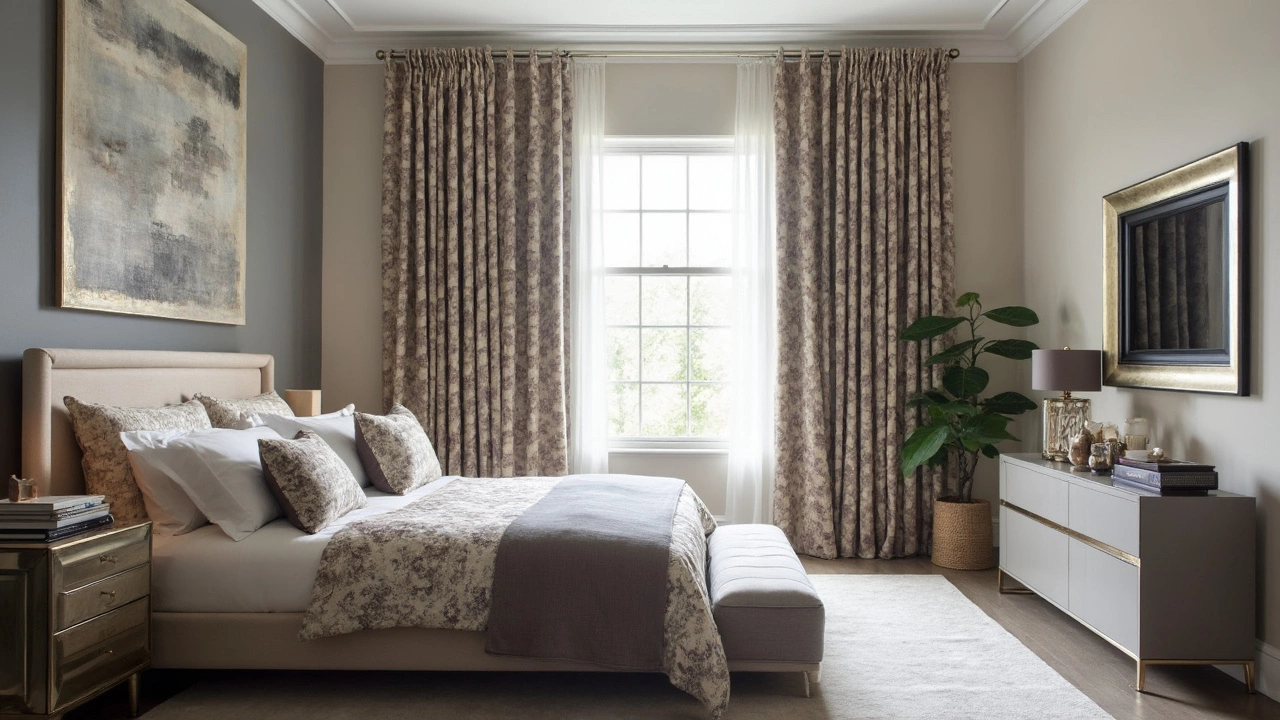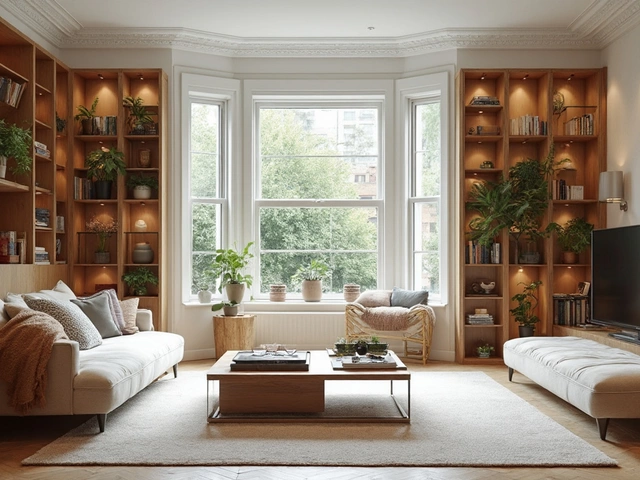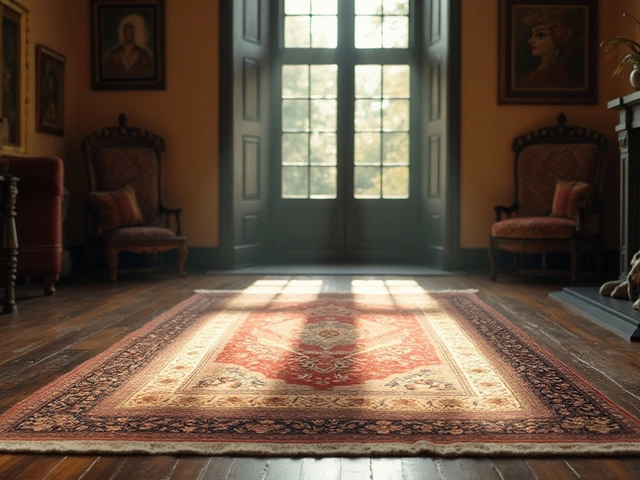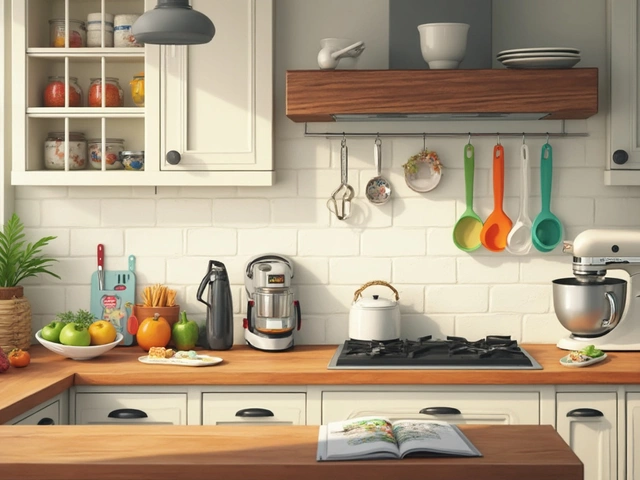Why do curtains seem so confusing? It's like, who would've thought putting up some fabric could require so many decisions? But here's the deal: getting them right changes everything in your room. You know how picking the wrong dress makes you feel off all day? It's kind of like that with curtains!
Let's not mess around. The basic rule of thumb? Curtains should be long enough to either just kiss the floor or puddle like a dreamy mess—your choice. Width matters too; go for two to two and a half times the width of your window for that full, luxurious look. Want practical and cozy? Think about thicker materials for keeping the cold out. Feeling light and airy? Go for sheer and breezy fabrics.
So, how do you choose? First, measure. Grab that tape measure and get precise because close enough won't cut it. Don't forget to consider where the curtain rod will go—straight from the ceiling or right above the window frame changes the vibe. And what about the fabric? Well, think about the room's function. Are you seeking morning sun or blackout dark?
- Measuring Length and Width
- Choosing Fabrics and Colors
- Curtain Styles and Functions
- Mounting Techniques
- Maintenance and Care Tips
Measuring Length and Width
Okay, let's get straight to the point. The right curtain length is what gives your room that polished look. First step? Measure like a pro. It’s tempting to guess and go with the eyeball method, but trust me, the tape measure is your new best friend.
Start by figuring out where your curtain rod will hang. Usually, placing it about four to six inches above the window frame makes the ceilings look higher. Measure from this point down to where you want the curtains to fall. Most people like them just grazing the floor, but if elegance is your thing, you might want that puddling look. Here's a quick checklist:
- Just Grazing: Curtains barely touch the floor.
- Breaking: Fabric rests gently, creating a slight fold on the floor.
- Puddling: Extravagant and dramatic, perfect for formal spaces.
Now, onto the width. Always aim for curtains that are two to two and a half times the width of your window. This gives your windows that full and luxurious curtain look we're all after. Double widths are often overlooked but make all the difference.
It's essential to account for extra fabric in the width if you're going for a gathered or pleated look. Overlooking this could leave you with flat-looking curtains that just hang there instead of making that room pop.
If you're unsure, here's a quick way to check your measurements: Just hold a measuring tape horizontally across your window and multiply by your desired fullness (usually between 2 to 2.5). Easy, right?
Choosing Fabrics and Colors
Picking the right fabric and color for your curtains is more than just about looks—it's about how you want your room to feel. Let's get real: different fabrics do different stuff. For instance, heavy materials like velvet add warmth and block light, making them perfect for bedrooms where you want it cozy and dark. On the other hand, lighter fabrics like linen or cotton are fantastic for letting light stream in, keeping things bright and airy in living rooms or kitchens.
When it comes to picking colors, think about the vibe. Neutrals are safe and timeless, but if you're looking to make a statement, bold colors or patterns might be your new best friends. A rich navy or deep green can add elegance, while brighter tones can inject some fun. Remember this: curtains are a big piece of your room's design puzzle, so they should either complement or contrast what's already there.
Patterns are another exciting way to add character. Stripes can make ceilings look taller, while florals can bring in a touch of the outdoors. But don't go overboard—too much pattern can overwhelm a space. If your furniture or walls already have a strong pattern, you might want to keep your curtain styles simple.
Here’s a nifty tip: when you’re unsure, bring home a fabric swatch before committing. Check how it matches under both sunlight and artificial light—colors can look wildly different at different times of the day.
Also, keep in mind maintenance. Fabrics that are prone to wrinkles or that shrink easily in the wash may not be ideal for high-traffic areas unless you love a good ironing session.

Curtain Styles and Functions
Now we're getting into the fun part: styles and what they do for your space. There are tons of curtain styles out there, and each brings its own flair and function. Ever notice how certain curtains just make everything feel pulled together? That’s what picking the right style does.
First up, let's chat about panel curtains. These are the classic ones you likely think of—just a panel or two hanging on a rod. Super versatile and easy to switch out whenever you're feeling a new vibe.
If you're after something more upscale, think about sheer curtains. They’re perfect for letting sunlight spill beautifully into a room while giving you that chic, airy feel.
On the practical side, blackout curtains are lifesavers for anyone longing for good shut-eye without the 5 a.m. sunshine greeting. They’re great for bedrooms or even media rooms where you don't want any light sneaking in.
Then there’s the stylish Roman shades which pull up rather than to the side. Neat and tailored, they fit best with smaller windows or spaces where draped fabric isn’t practical.
If you're the type who loves details, consider curtains with valances or scarves. These add extra layers and texture, making the windows the focal point of your room.
Why not think about mixing and matching some styles? A heavier curtain behind a sheer one offers flexibility. Keep it open when you want light or closed when watching movies.
Check out this snapshot of curtain choices:
| Style | Best For |
|---|---|
| Panel Curtains | Everyday versatility |
| Sheer Curtains | Bright and airy spaces |
| Blackout Curtains | Bedrooms and media rooms |
| Roman Shades | Smaller windows, neat look |
| Valances and Scarves | Adding detail and interest |
Remember, curtains are the final touch that pulls together the whole room scheme. Picking the right style isn’t just about how it looks, but also how it functions. So, think about your needs and let your curtain style serve you well!
Mounting Techniques
So, you’ve got your curtains picked out, but what about hanging them? This part might feel a bit puzzling, but it's all about getting the right height and style to make your home look on point. Let's dive in!
First up, think about curtain rods. Are you into the sleek and modern vibe or something more ornate? Ideally, your rod should be about 6-12 inches wider than your window on each side. Why? It gives your window a grander look and lets in more light when the curtains are open. When installing, aim for the rod to be positioned about 4-6 inches above the window. The higher they are, the taller your room looks!
If you're not into drilling holes, consider tension rods for a no-tools option, especially in rented spaces. They’re ideal for lightweight fabrics or smaller windows. But remember, not all windows are the same and bay windows, for example, might need a flexible rod solution.
Now, for those tricky spots like corners or extra wide windows, there are special rods and brackets designed just for the job. You might need to adjust the number of brackets if your curtain fabric is heavier.
- Pro Tip: Use center supports for rods over 60 inches wide to prevent sagging.
- Bonus Tip: For a layered look, double rods let you mix sheers with heavier drapes.
Installing curtains might seem like a minor detail, but the right mounting technique can turn those drapes into a key decor element. You’ve got this!

Maintenance and Care Tips
So you've got the perfect curtains, now how do you keep them looking fresh and fab? Curtains can actually catch a lot of dust and dirt, and knowing how to care for them keeps your place looking sharp.
First up, regular cleaning is key. Depending on your curtain fabric, some can go right in the washing machine, but others might need a little more TLC. Always check the care label. If they're machine washable, go for a gentle cycle with cold water to avoid any shrinkage or damage. For more delicate fabrics, like silk or velvet, spot cleaning or even professional dry cleaning might be the safest bet.
If dust is your main enemy, make it a habit to vacuum your curtains every couple of weeks. Yep, that's right—vacuuming them with the soft brush attachment can help keep the dust bunnies at bay.
Don’t forget about the curtain rod and hardware. They’re often overlooked but can collect dust and grime too. A quick wipe down with a damp cloth should do the trick.
Last tip: Rotate your curtains every so often to avoid uneven fading, especially if they’re near a sunny window. UV rays can be pretty harsh on curtain colors, causing them to fade over time.
Following these simple care tips keeps your curtains looking great and helps them last longer, saving you money and hassle in the long run.







